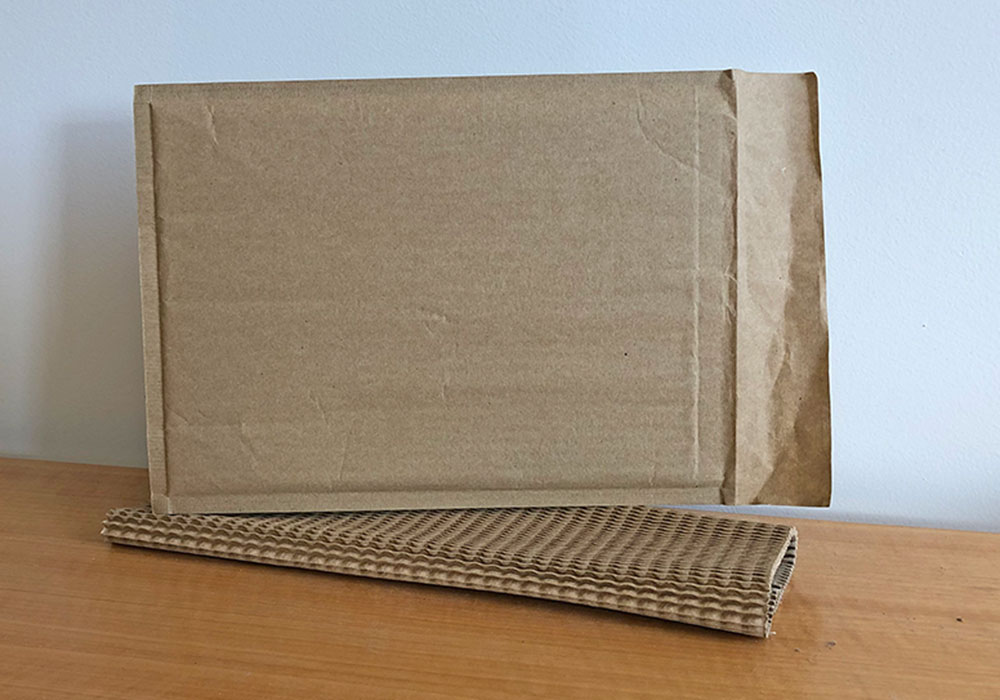With an estimated nearly 300, 000 tonnes of plastic floating around in the ocean and landfills piling ever higher with rubbish we can all opt for eco-friendly postage packaging when we send stuff in the mail.
The rise in eCommerce transactions globally has meant our world is experiencing a surge in postage packaging. It’s our responsibility as eCommerce businesses to find alternatives to plastics in our packaging and allow customers the opportunity to recycle or compost the material we ship our goods in.
There are plenty of solutions to eco-friendly postage packaging, all of them readily available to purchase online or from your local packaging supply company.
Packaging waste
The days of producing environmentally irresponsible packaging are on their way out. New eco-friendly postage packaging is being designed with an end of life cycle strategy built into their performance and processes. Packaging is at the forefront of innovation as waste is one of the biggest problems facing humanity right now. Alongside new material production is the development of recovery solutions such as composting, recycling and repurposing. Consumers and industry are leading the way in postage and packaging innovation with customers exercising their purchasing choices to influence corporate responsibility in the manufacturing sector.
Biodegradable postbags
New compostable mailer bags made from corn-starch are available that can be composted in a home composter. They are just as tough, durable and waterproof as plastic mailer bags. To be certified as a bio-plastic product, the material must be sourced from plant-based starches. In Australia, there are certifications: Home Compostable (AS5810) and Commercially Compostable (AS4736). Internationally: Home Compostable (EN13432) and Commercially Compostable (EN13432).
Bioplastic products are certified by The Australasian Bioplastics Association with a seedling logo throughout Australia and New Zealand. This helps customers recognise and verify that your packaging is safe to compost.
Alternatives to plastic fill and bubble wrap
There are plenty of eco-friendly postage packaging alternatives to plastic bubble wrap and void fill. The cheapest and most common void fill is scrunched paper and chopped recycled cardboard. Your items can sit in a nest of these materials and be safe from shock and damage during transit.
Corrugated cardboard and die cut Kraft paper that forms a three-dimensional honeycomb cushion around objects in a carton or mailer bag can be used to line cartons and bags, wrap and mould around fragile items. These products are much more aesthetically pleasing than plastic alternatives.
Air pillows
These days air cushions made from biodegradable and recycled film are available in different sizes. The air cushions can be recycled, reused and composted without leaving any toxic residues. The use of air as cushioning is nothing new in postage packaging, it makes superior shock absorption and cuts out a lot of weight from packages. This, in turn, lowers the carbon emissions clocked up due to transporting of freight.
Ecofriendly carton sealing tape
There are gummed paper tapes to choose from that perform much better than plastic-based tapes when sealing cardboard cartons. The gum is water activated, helping the tape to seal the flaps of a carton by bonding with the corrugated layer. Water-activated tape deters tampering, unlike cellophane tapes which can unstick from the carton when pushed. Even better is that only one strip of tape is needed for a complete seal, eliminating time spent on carton sealing with other types of tapes. Less tape wastage is also a bonus.
These are some of the ecofriendly postage packaging materials used to ship goods all over the world. There is no need to stick to the usual suspects such as bubble wrap, cellophane tapes and Styrofoam packing peanuts. As businesses that use postage in the supply chain, we can make a difference by choosing eco-friendly postage packaging.

